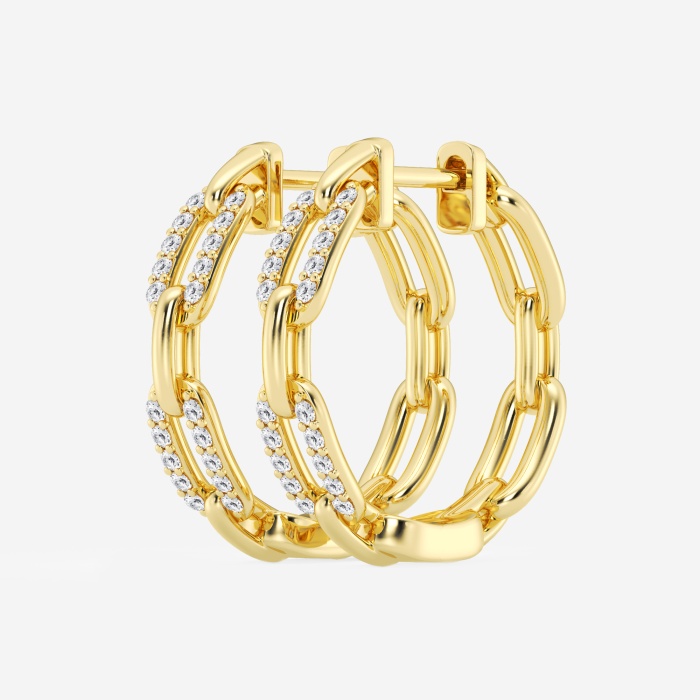What is Gold Leaf Gilding on Jewelry?
Introduction
Gold leaf gilding is a traditional decorative technique that involves applying thin layers of gold foil onto the surface of jewelry or other objects. This method has been used for centuries to enhance the aesthetic appeal of various items, including jewelry, religious artifacts, architectural elements, and artworks. The process requires precision and skill, as the gold leaf is extremely delicate—often as thin as 0.12 microns—and must be applied in multiple layers to achieve durability and a luxurious finish.
In jewelry making, gold leaf gilding is commonly applied to silver or copper bases, creating a contrast between the underlying metal and the golden surface. Many gilded jewelry pieces feature antique or textured finishes to emphasize this contrast, giving them a unique and artistic appearance.
This article explores the history, techniques, applications, and artistic significance of gold leaf gilding in jewelry, providing a comprehensive understanding of this intricate craft.
1. The History of Gold Leaf Gilding
Gold leaf gilding dates back thousands of years, with evidence of its use in ancient Egypt, China, and Greece. The Egyptians used gold leaf to adorn tombs, sarcophagi, and jewelry, believing that gold symbolized eternity and divine power. Similarly, in ancient China, gold leaf was applied to Buddhist statues and royal artifacts to signify wealth and spiritual purity.
During the Renaissance, European artisans perfected gilding techniques, using them in religious paintings, sculptures, and luxury items. The process became a symbol of opulence and craftsmanship, often reserved for nobility and high-ranking clergy.
In jewelry, gold leaf gilding became popular as a cost-effective alternative to solid gold, allowing artisans to create visually stunning pieces without the expense of using large amounts of gold.
2. The Gold Leaf Gilding Process
Applying gold leaf to jewelry is a meticulous process that requires patience and expertise. The key steps include:
A. Preparing the Base Metal
The jewelry piece (usually silver or copper) must be cleaned and polished to ensure a smooth surface. Any imperfections can affect the adhesion of the gold leaf.
B. Applying the Adhesive
A special glue called gilding size is applied to the metal. This adhesive is typically water-based and remains tacky for a short period, allowing the gold leaf to stick properly.
C. Placing the Gold Leaf
Gold leaf sheets, which are incredibly thin (around 0.12 microns), are carefully laid onto the adhesive. Due to their fragility, they are handled with soft brushes or specialized tools to prevent tearing.
D. Burnishing the Gold Leaf
After application, the gold leaf is gently pressed and smoothed to ensure full adhesion. Multiple layers may be applied to strengthen the coating and enhance durability.
E. Sealing the Surface
To protect the delicate gold layer, a sealant (such as lacquer or wax) is often applied. This prevents tarnishing and wear over time.
3. Characteristics of Gold-Leafed Jewelry
Gold leaf gilding gives jewelry a distinctive appearance, characterized by:
- Aged or Antique Finishes: Many gilded pieces are intentionally oxidized or textured to create a vintage look, highlighting the contrast between the gold and the base metal.
- Subtle Imperfections: Since gold leaf is hand-applied, slight variations in texture and color add to its artisanal charm.
- Lightweight Feel: Unlike solid gold jewelry, gilded pieces are lighter due to the minimal amount of gold used.
However, gold leaf jewelry requires careful handling, as the thin gold layer can wear off over time, especially on frequently touched areas like rings and bracelets.
4. Applications Beyond Jewelry
While this article focuses on jewelry, gold leaf gilding is widely used in:
- Religious Art: Statues of deities, church domes, and sacred objects often feature gold leaf for a divine aesthetic.
- Architecture: Historical buildings, palaces, and monuments use gilding to enhance grandeur.
- Fine Art & Calligraphy: Artists use gold leaf in paintings and manuscripts for decorative accents.
- Luxury Packaging & Furniture: High-end products sometimes incorporate gold leaf for an opulent touch.
5. Advantages and Disadvantages of Gold Leaf Gilding
Advantages:
- Cost-Effective: Uses minimal gold while achieving a luxurious look.
- Versatile: Can be applied to various metals and shapes.
- Artistic Appeal: Creates unique textures and contrasts.
Disadvantages:
- Durability Issues: The gold layer can wear off with frequent use.
- High Maintenance: Requires gentle cleaning and occasional reapplication.
- Skill-Dependent: Poor application can lead to uneven finishes or peeling.
6. Caring for Gold-Leafed Jewelry
To preserve gilded jewelry:
- Avoid exposure to water, perfumes, and harsh chemicals.
- Store separately to prevent scratches.
- Clean with a soft, dry cloth—never abrasive materials.
- Consider professional re-gilding if the gold layer fades.
Conclusion
Gold leaf gilding is an ancient and artistic technique that brings elegance and sophistication to jewelry. Though delicate, its unique aesthetic makes it a cherished decorative method. Whether used in jewelry, art, or architecture, gold leaf gilding continues to symbolize luxury and craftsmanship, bridging tradition with modern design.
For jewelry lovers seeking affordable yet opulent pieces, gold-leafed jewelry offers a perfect blend of beauty and history. With proper care, these exquisite creations can maintain their brilliance for years to come.
